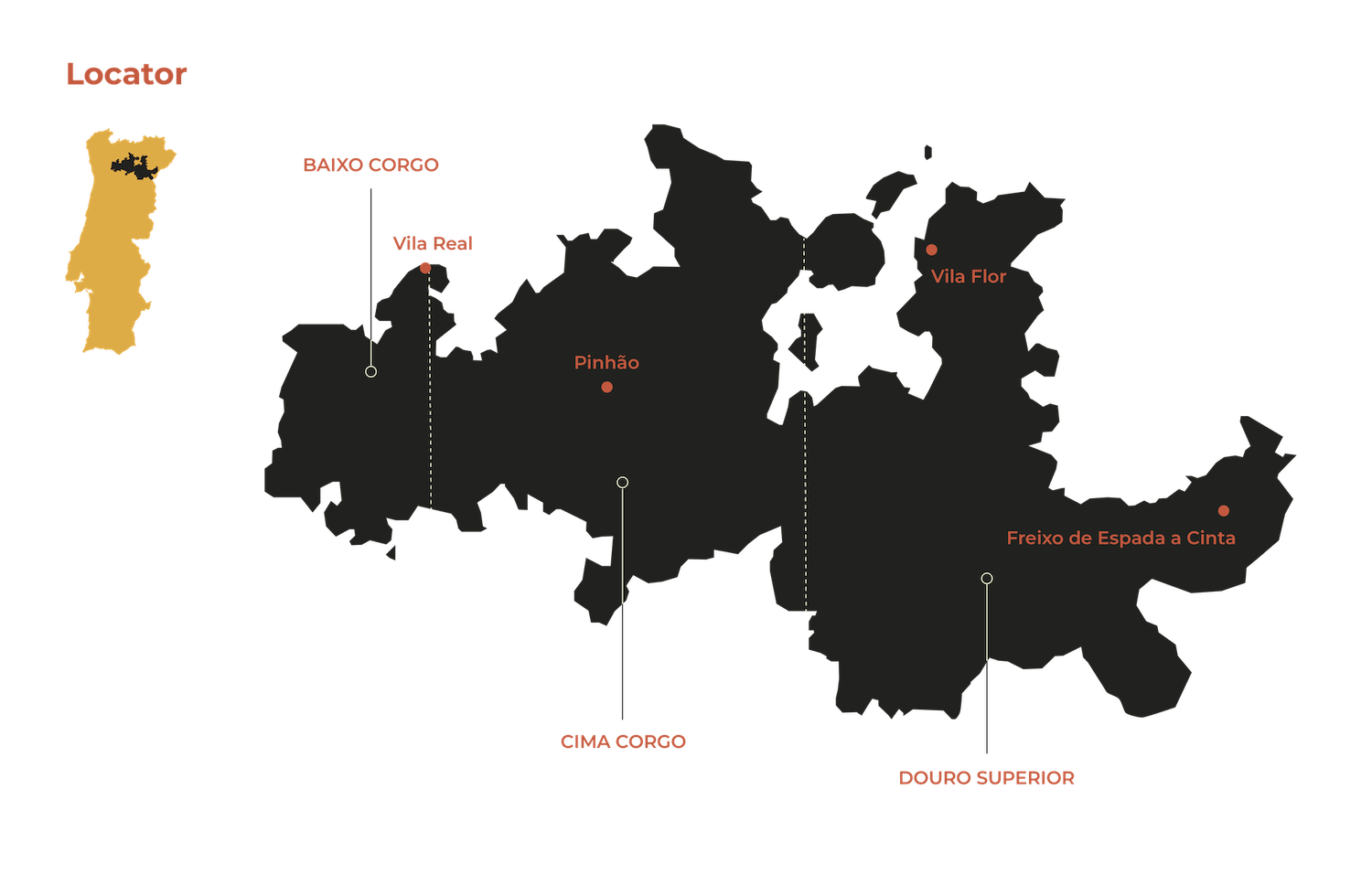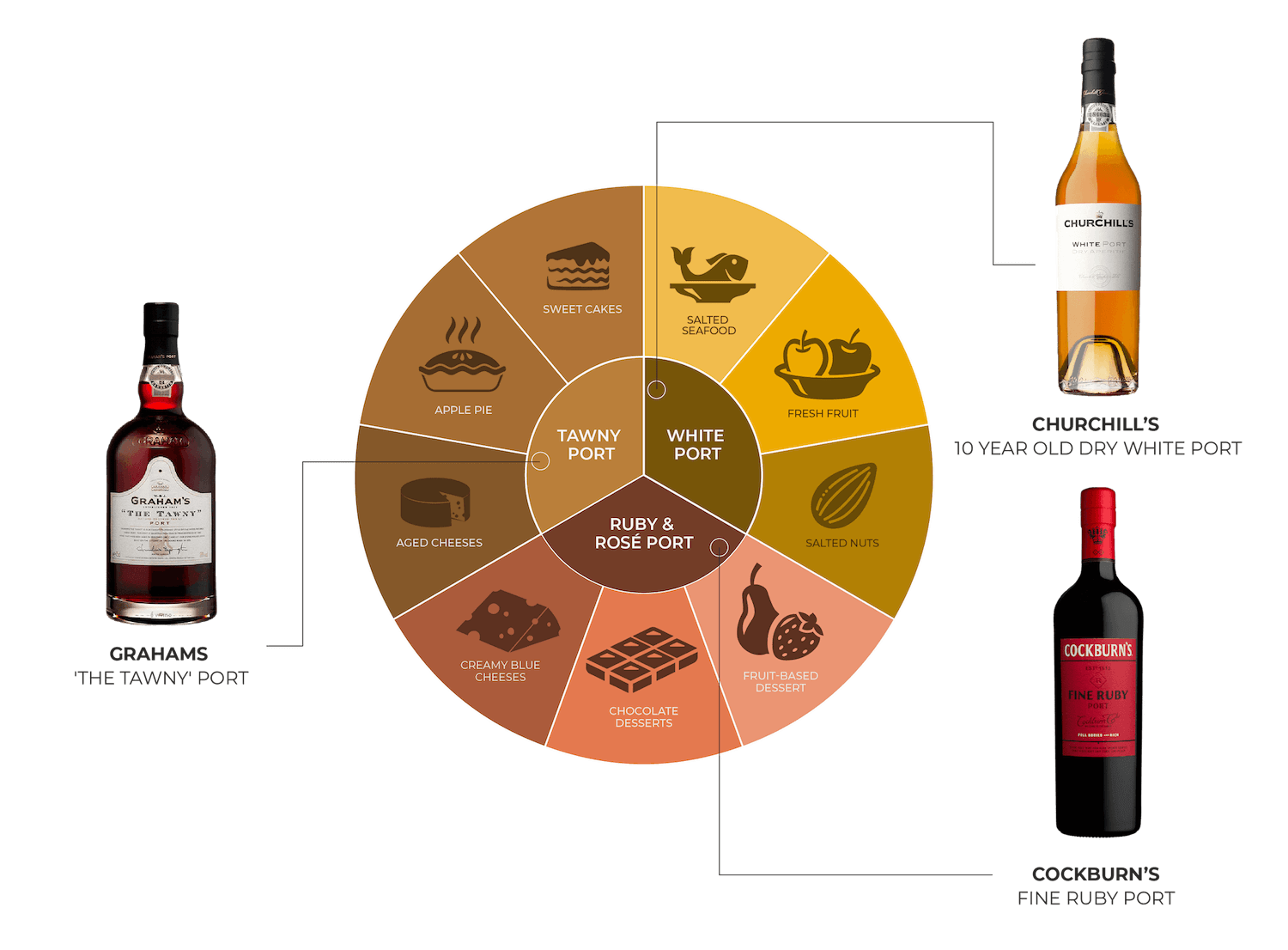Port is a type of fortified dessert wine that is produced exclusively in the Douro Valley region in Portugal, which is relatively near to the north-western city of Oporto or Porto, where it has been crafted by winemakers in that area for centuries.
Famous for coming in styles that can be off-dry to very sweet in their taste, Port is a highly diverse style of wine that is able to be enjoyed by many.
To get a quick idea of how Port wine can taste and how it can be best served alongside food, see our quick graphic below.
As mentioned previously, the production of Port wine has been centred around the Portugese city of Porto for centuries, which lies in the north west Douro Valley area, with the city even lending its name to this heralded style of fortified wine.
Port owes much of its creation and success to the demand from English and Scottish merchants and consumers, who have, since the Middle Ages, imported large quantities of the wine into Great Britain.
The reason for this lies in the fact that Portugese winemakers needed to fortify their standard bottles of red wine departing for England, often with brandy, as if it was left unfortified, then it would usually not survive the rather long journey.
Not only did fortifying the standard bottles of red wine mean that they’d make it safely to England without spoiling, it also meant the wine tasted sweeter than normal and it had a significantly enhanced alcohol content and body, something that the English consumer enjoyed.
You may also notice that many bottles of Port feature English names on the labels, Cockburns being one of the more famous examples, which clearly shows the direct link that the citizens of Great Britain have, over time, established with the winemaking industry around the city of Porto.
For more on the historical development of this wine over the centuries, be sure to read this article, which explores it in further depth.
As Port is a type of fortified wine, which is wine that has benefitted from the addition of some kind of distilled spirit during production, often brandy, the flavour profile of the final wine product tends to be noticeably sweeter in its taste.
This holds true for most styles of Port wine that are more widely available, with many of the standard red-coloured bottles of Port wine featuring prominent flavours of raspberry, blackberry, chocolate, and sweet spice.
In addition to the fortification influencing flavour, Port wines are also made from a range of different grape varietals and they can be aged for a very short or very long period of time in oak prior to bottling, greatly impacting the resulting flavours found in each bottle.
Explored further below, the specific flavour profiles of Port wines are best found by looking at the particular style that the winemaker chooses to produce, with this being indicated on the label.
To get more information on how these wines are produced, check out another quick guide on this page.
The grapes used to produce Port wine are cultivated only in those wineries located in the Douro valley wine-producing area in Portugal, which lies close to the border with Spain and a relatively short distance upriver from the coastal city of Porto.
Whilst it is technically possible to produce Port style wine anywhere in the world, and you will be able to find examples of Port-like wine made elsewhere, in Australia for instance, the term “Port” is solely reserved for those bottles coming exclusively from Portugal, as protected under European Union trade laws.
Whilst all bottles of Port wine are generally considered to be fairly sweet in their taste, they can be separated upon a few key factors of production, including how long they’re aged for, whether they’re aged in oak or bottle, and which grape varietals were used, all of which go some way towards indicating the expected flavour profile in a specific bottle.
These classifications are all indicated on the label, making it easy to generally pick how each bottle will taste.
It's still important and highly recommended, however, to try and source tasting notes about a particular bottle that you’re looking to sample as variations still definitely occur amongst bottles of even the same style.
Pairing food with Port wine can prove to be a highly rewarding experience, with there being varied suggestions that should be followed, each dependent upon the particular type of Port being considered.
Bottles of ruby and rosé Port often pair best with creamy blue cheeses, chocolate desserts, or any kind of fruit-based dessert.
White Port, on the other hand, usually pair best with salted seafood items, salted nuts, or most kinds of fresh fruit.
Finally, bottles of tawny Port are perfectly matched alongside apple pie, aged cheeses, or sweet cakes such as tiramisu or cheesecake.
Sherry is a complicated & often misunderstood drink. Here we explore all of the ways that it can be enjoyed & how you can pick the right bottle & type for you.
Ever wanted to know what wines to pick when looking for something sweet? We help you satisfy your craving for something sweet when browsing in a bottle shop or bar.
Curious about Liqueur Muscats? In our illustrated guide for beginners, we uncover what makes them so special, including how they taste & match with food.



